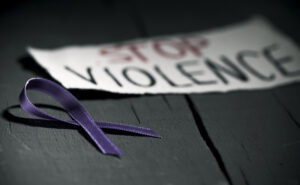Domestic violence line (24 hours) 1800 656 463; or the National Sexual Assault and Domestic Family Violence Counselling Service (24 hours) 1800 737 732; if you are in immediate danger call 000. To report suspected child abuse or neglect, call the 24 hour Child Protection Helpline on 132 111.





Who Experiences Domestic Violence?
People of all ages, ethnicities and social groups can be victims of domestic and family violence. Poor people, rich people and people in all sorts of relationships can also be victims. Though it is important to acknowledge that men are more likely to be victims of violence in the community and some men are victims of domestic and family violence, this type of violence is overwhelmingly committed by men against women. Similarly, a woman is far more likely than a man to experience physical and sexual violence in her home and at the hands of a current or former male partner.

Certain people, identities and communities within Australia are at greater risk than others and experience violence that intersects with other forms of discrimination and disadvantage. For example:
- Women with disability in Australia are twice as likely to have experienced sexual violence since the age of 15 years than women without disabilities. The type of disability can intersect with gender and different forms of violence for example, 1 in 2 women with psychological and/or cognitive impairment has experienced sexual violence. What evidence there is also suggests that women living with disabilities experience violence at a higher than average rate, though the perpetrator is not always a partner or ex-partner but carer, paid or unpaid, at home or in a residential facility. The Women With Disability Association has an excellent discussion of the particular issues and experiences of domestic violence for women with disability.
- Aboriginal and Torres Strait Islander women experience disproportionately high rates of violence, and are 31 times more likely to be hospitalized due to family violence-related assaults. Lesbian, bisexual and queer women experience higher rates of sexual violence than heterosexual women in Australia. Transgender and gender diverse people also experience very high rates of family, domestic and sexual violence.
- Elder abuse often occurs in relationships where there is an expectation of trust such as with family, friends and carers.
- Young women (18–34 years) experience significantly higher rates of physical and sexual violence than women in older age groups.
- In addition to physical and sexual violence, women from migrant and refugee backgrounds are particularly vulnerable to financial abuse, reproductive coercion and immigration related violence, for example withholding documents, threats of visa cancellations or deportation.
 SOME FAST FACTS:
SOME FAST FACTS:
- 2 in 5 women (39%) have experienced violence since the age of 15
- Women are more likely to experience violence from someone they know than by a stranger (35% vs 11%)
- On average, one woman is killed every nine days by a current or former partner
- In the year 2021/22, 4,620 women aged 15 years and over (average of 13 women/day) were hospitalized due to family and domestic violence
- 1 in 4 women (27%) has experienced violence, emotional abuse, or economic abuse by a cohabiting partner since the age of 15
- 1 in 3 women (31%) has experienced physical violence since the age of 15
- 1 in 5 women (22%) has experienced sexual violence since the age of 15
- 1 in 2 women (53%) has experienced sexual harassment in their lifetime.
- Women are at increased risk of experiencing violence from an intimate partner during pregnancy.
- Women who have experienced violence are more likely to experience multiple incidents of violence.
(Above: Courtesy Our Watch)
In NSW
The situation in NSW largely mirrors the national picture. DV assaults recorded by NSW Police increased significantly over the five years leading up to December 2023, up by 6.7% over a two year period and up 3.6% per year on average over the five. These significant increases in DV assaults were recorded for Greater Sydney and in Regional NSW. The year-on-year increase was higher in Regional NSW than Greater Sydney (7.6% vs 6.0%), and substantially higher over five years (5.5% vs 2.0% average annual change).The map of NSW below shows the prevalence of DFV in each area, marked with their relation to the average rates of DFV for the state as of 2023. Areas which are equal to or less than the average are in the lightest color.
Courtesy: BOCSAR NSW
Why is domestic violence so common?
There is no one answer to this question, but research shows that it is a combination of cultural, social, economic and historical factors. It is never just simply about the people involved, either victim or perpetrator. That is why domestic and family violence is everyone’s business, whether or not we have experienced it ourselves. It is our attitudes and behaviors across almost every element of our lives that overwhelmingly determines the experience and prevalence of domestic violence. What we accept, adhere to or condone at home, in our workplaces, sporting teams, political leadership and government policies, in our schools and universities – this is all a part of the story of domestic violence.
Courtesy: ANROWS and VicHealth
GETTING INVOLVED
For information on how to get involved click here.
* Please note the information provided in this website is general in nature and meant for informative purposes only, we are not a service provider and are unable to provide emergency assistance. If you or someone you care about is in an unsafe situation and needs assistance, please contact the qualified professionals and services listed above.


